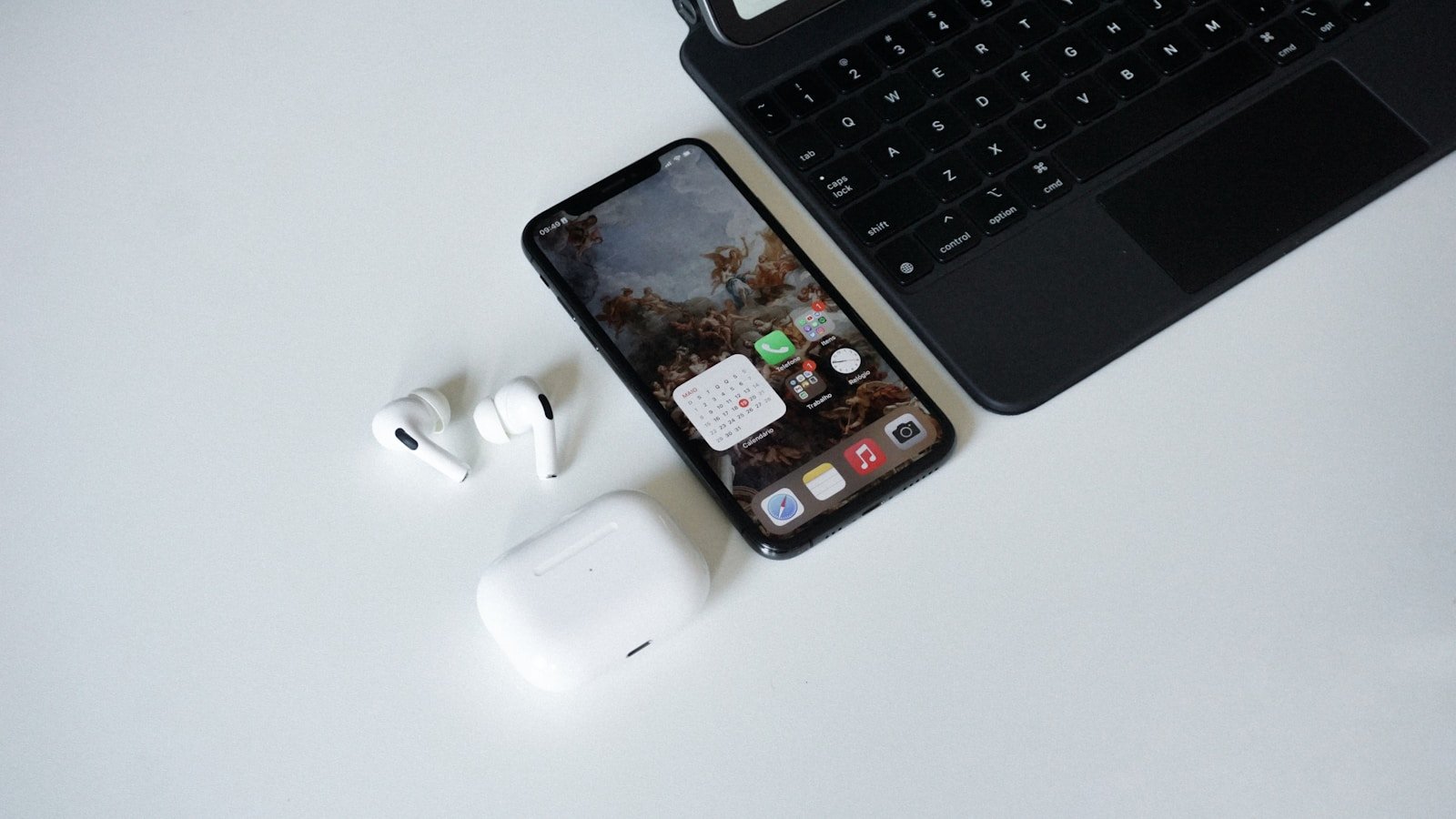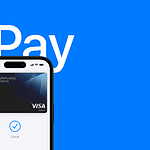The humble iPhone keyboard has limits, especially for users who write long emails or documents. Adding an external keyboard to an iPhone transforms it into a powerful mobile workstation, letting users type faster and more accurately while accessing helpful keyboard shortcuts.
Physical keyboards bring desktop-level typing speed to the iPhone. By connecting a Bluetooth keyboard, users can draft messages, take notes, and write documents with greater precision than the on-screen keyboard allows. The iPhone’s Full Keyboard Access feature enables complete device control through keyboard commands.
The productivity boost from an external keyboard makes the iPhone more versatile for work tasks. Users can quickly switch between apps, edit text efficiently, and maintain better typing posture compared to hunching over the on-screen keyboard.
External Keyboard for iPhone: Complete Guide
Using an external keyboard with your iPhone can greatly enhance productivity, especially for typing long emails, documents, or chatting. Whether you’re working on the go or want a better typing experience, connecting a physical keyboard to your iPhone is easier than you might think. This guide covers everything you need to know about external keyboards for iPhone.
Why Use an External Keyboard with iPhone?
- Faster typing compared to the on-screen keyboard.
- Improved ergonomics for long typing sessions.
- Shortcut support for quicker navigation and commands.
- Better for multitasking with iPadOS and iOS multitasking features.
- Accessibility benefits for users who find on-screen typing difficult.
Types of External Keyboards Compatible with iPhone
1. Bluetooth Keyboards
The most popular and convenient option.
- Connect wirelessly via Bluetooth.
- Compatible with most iPhones running iOS 13 and later.
- Portable and often foldable for travel.
- Examples: Apple Magic Keyboard, Logitech K380, Anker Bluetooth Keyboard.
2. Wired Keyboards
Less common but possible with an adapter.
- Connect via Lightning to USB or USB-C adapter.
- Requires a powered USB hub or keyboard with low power draw.
- Mostly used in stationary setups.
3. Smart Keyboard Folios (for iPad)
While designed for iPads, some iPhone users use Bluetooth keyboards for similar functionality.
How to Connect a Bluetooth Keyboard to Your iPhone
- Turn on your Bluetooth keyboard and put it in pairing mode (refer to the keyboard’s manual).
- On your iPhone, go to Settings > Bluetooth.
- Make sure Bluetooth is enabled.
- Under Other Devices, tap your keyboard’s name when it appears.
- Follow any on-screen prompts to complete pairing.
Once connected, your iPhone will automatically remember the keyboard for future use.
Using the External Keyboard with iPhone
- Typing: Use the keyboard as you would with a computer.
- Keyboard Shortcuts: Many apps support shortcuts like:
- Cmd + C for copy
- Cmd + V for paste
- Cmd + X for cut
- Cmd + Z for undo
- Cmd + Tab to switch apps
- Navigation: Use arrow keys to move the cursor, Home/End keys to jump to start/end of lines (depending on keyboard support).
- Full Keyboard Access: Enable in Settings > Accessibility > Keyboards > Full Keyboard Access to control your iPhone entirely with a keyboard.
Tips for Best Experience
- Check compatibility: Most Bluetooth keyboards work seamlessly, but some keys might behave differently.
- Update iOS: Keep your iPhone updated for the latest keyboard features and bug fixes.
- Customize shortcuts: Some apps allow customization of keyboard shortcuts.
- Use keyboard covers or folios for protection and portability.
- Try different keyboards: Find one with a layout and key feel that suits you.
Troubleshooting Common Issues
- Keyboard not connecting: Turn Bluetooth off and on, restart your iPhone, or unpair and re-pair the keyboard.
- Lag or delay: Ensure sufficient battery on the keyboard, reduce Bluetooth interference.
- Keys not working: Test keyboard on another device to isolate the problem.
- Special keys not functioning: Some keyboards may lack full iOS support; check manufacturer specs.
Recommended External Keyboards for iPhone
- Apple Magic Keyboard: Seamless integration, great build quality.
- Logitech K380: Compact, multi-device pairing.
- Anker Ultra Compact Bluetooth Keyboard: Budget-friendly and portable.
- Brydge Keyboards: Designed for Apple devices with premium feel.
Conclusion
Using an external keyboard with your iPhone can dramatically improve your typing speed and overall productivity. Whether you choose a Bluetooth or wired keyboard, pairing and setup are straightforward. Explore keyboard shortcuts and accessibility features to get the most out of your setup.
Key Takeaways
- External keyboards connect easily to iPhones via Bluetooth for faster typing
- Full Keyboard Access provides complete iPhone control through keyboard shortcuts
- Physical keyboards improve productivity and comfort for extended writing sessions
Connecting and Using External Keyboards with iPhone
External keyboards add flexibility and efficiency to iPhone typing, enabling faster text input and quick access to system functions through keyboard shortcuts.
Types of External Keyboards
Apple’s Magic Keyboard offers seamless integration with iPhone, featuring a compact design and long battery life. The keyboard connects instantly and supports all iOS keyboard shortcuts.
Third-party options like the iClever Foldable Bluetooth Keyboard provide portability with tri-fold designs that fit in small bags. These keyboards often cost less than Apple accessories.
Keyboard cases combine protection with typing functionality. Popular brands include Logitech and Brydge, creating a laptop-like experience.
Setting Up the Keyboard
Connecting a Bluetooth keyboard requires opening Settings > Bluetooth and placing the keyboard in pairing mode. The iPhone detects the keyboard within seconds.
For USB keyboards, users need a USB-C adapter for newer iPhones or a Lightning adapter for older models. The iPhone recognizes compatible keyboards automatically.
Common connection issues resolve by:
- Turning Bluetooth off and on
- Removing old keyboard pairings
- Checking keyboard battery level
- Restarting the iPhone
Enhancing Accessibility
Full Keyboard Access lets users control their iPhone completely with keyboard commands. Enable this feature in Settings > Accessibility > Keyboards.
Key shortcuts for navigation:
- Tab: Move between elements
- Space: Select items
- Arrow keys: Scroll through pages
- Command + H: Return home
These features help users with limited mobility navigate their iPhone efficiently.
Optimizing iPhone Productivity
Command + Space opens Spotlight search for quick app launching and web searches. Command + Tab switches between active apps.
Quick keyboard shortcuts:
- Command + H: Home screen
- Command + Space: Spotlight
- Command + Tab: App switcher
- Command + C/V: Copy/paste
Text selection becomes faster with Shift + Arrow keys. The keyboard also supports text formatting shortcuts in compatible apps.
Frequently Asked Questions
External keyboards enhance iPhone productivity through physical keys and shortcuts, while connection methods and compatibility vary across different models and manufacturers.
How can I connect a Logitech wireless keyboard to my iPhone?
Turn on the Logitech keyboard and set it to pairing mode. This usually involves pressing a dedicated Bluetooth button or holding a specific key combination.
Open Settings on the iPhone, select Bluetooth, and ensure Bluetooth is turned on. The keyboard should appear in the list of available devices.
Select the Logitech keyboard from the list to pair it. Enter the code displayed on the iPhone using the keyboard if prompted.
What are the steps to troubleshoot an external keyboard not working with an iPhone?
Check if the keyboard has sufficient battery power. Replace batteries or charge the keyboard if needed.
Reset the Bluetooth connection by turning Bluetooth off and on in iPhone Settings. Remove the keyboard from paired devices and try pairing again.
Restart both the iPhone and keyboard. Update iOS to the latest version to ensure compatibility.
What are the best external keyboards compatible with the iPhone 13 Pro Max?
The Apple Magic Keyboard offers seamless integration and full iOS shortcut support. It provides a premium typing experience with backlit keys.
The Logitech K380 Multi-Device supports easy switching between three devices. Its compact size and quiet keys make it ideal for mobile use.
The Keychron K3 mechanical keyboard delivers satisfying key feedback. Its slim profile and Mac/iOS layout options suit professional users.
Which Bluetooth keyboards are considered the best for iPhone users?
The Apple Magic Keyboard 2 provides native iOS support and instant pairing with Apple devices. Its battery lasts about a month between charges.
The Logitech MX Keys Mini combines portability with premium features. Its backlit keys and multi-device support suit power users.
How can I find and adjust iPhone keyboard settings for an external keyboard?
Access keyboard settings in Settings > General > Keyboard. Modify key repeat rates, shortcuts, and text replacement options.
Enable Full Keyboard Access under Settings > Accessibility > Keyboards for complete device control using keyboard shortcuts.
Are there any recommended foldable keyboards for iPhones, and how do they perform?
The iClever BK03 Bluetooth keyboard folds into three sections. It offers good key travel and eight hours of typing time.
The Microsoft Universal Foldable Keyboard provides a split design for ergonomic comfort. Its water-resistant surface protects against spills.
These foldable options balance portability with typing comfort. Their compact size fits easily in bags while maintaining usable key spacing.







